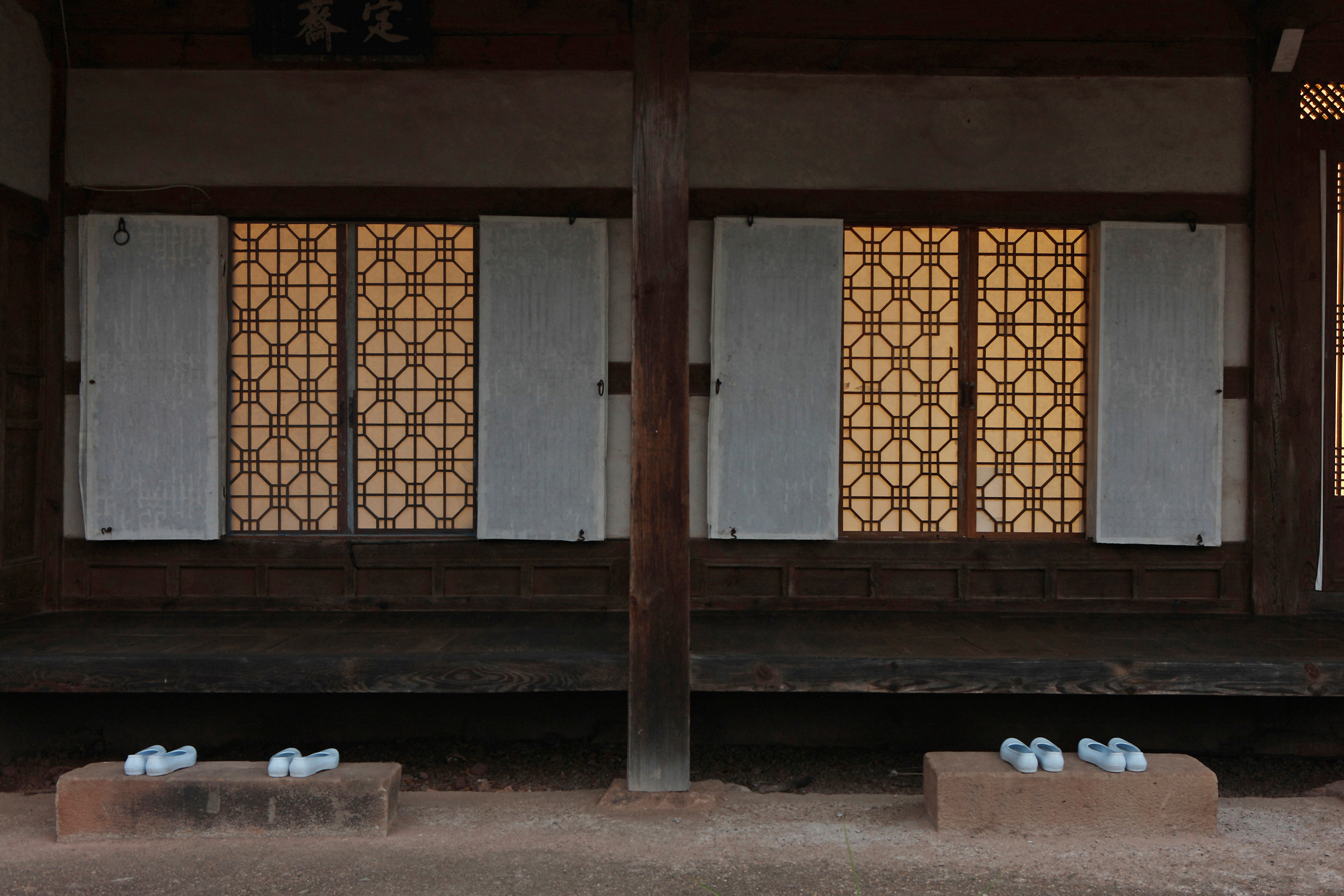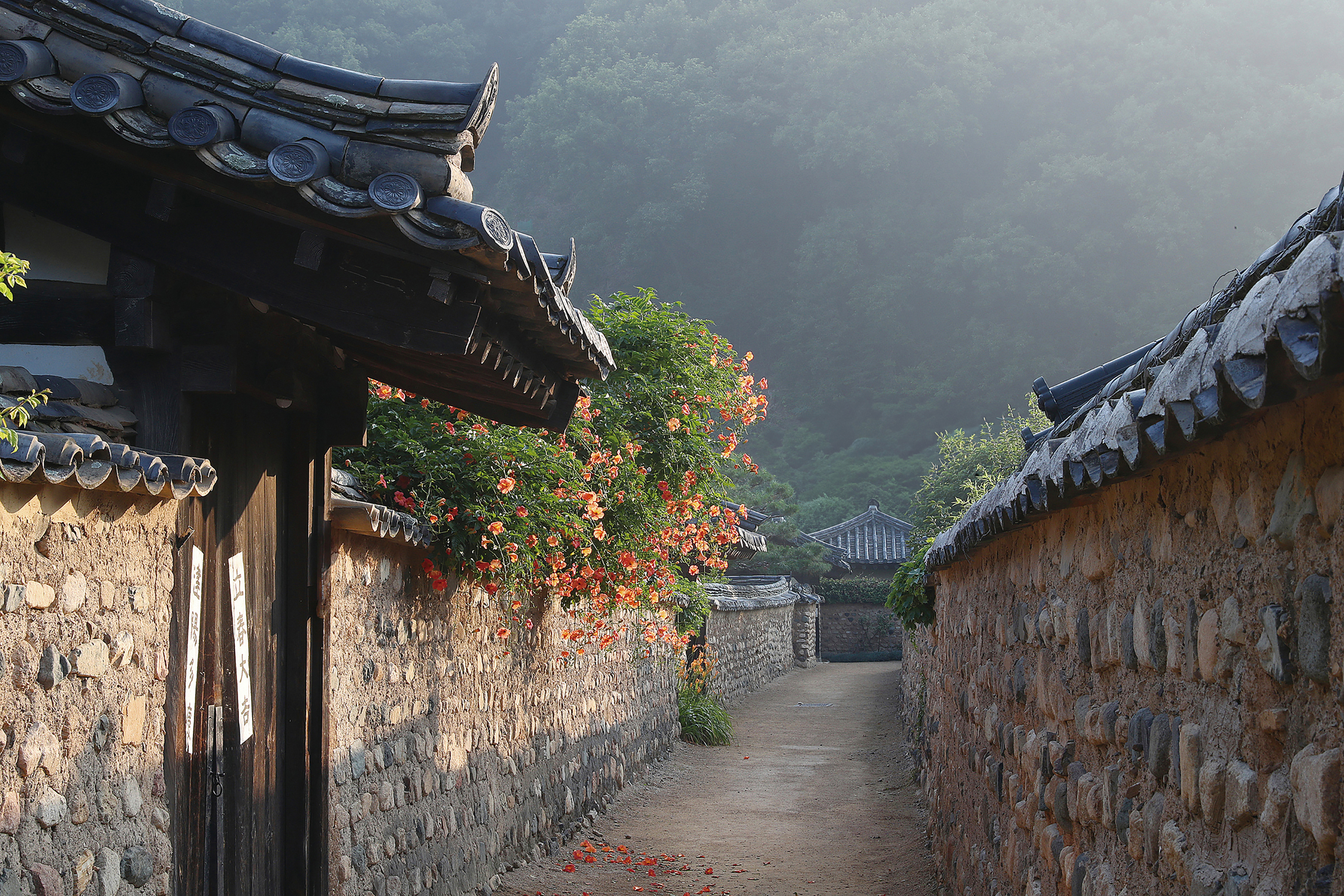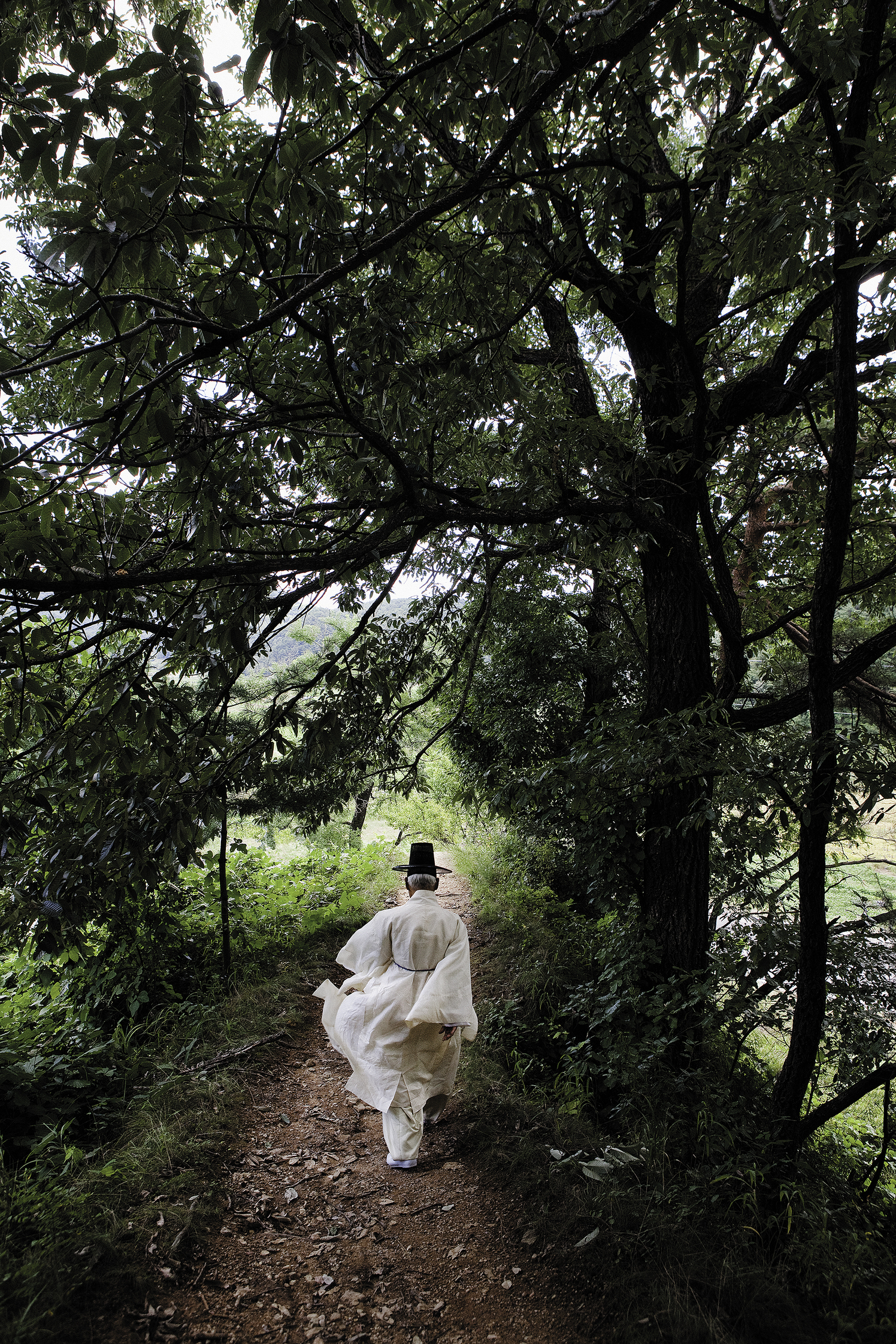 Photographer Lee Dong Chun Documents Waning Korean Tradition
Photographer Lee Dong Chun Documents Waning Korean Tradition 1. Please briefly introduce yourself.
I majored in photography at college and learned commercial photography at a studio in Chungmuro, Seoul after graduation. I then joined Designhouse, a company that publishes magazines and conducts a number of creative businesses. I became an inaugural member of the photography team for their monthly magazine Happy Design House, for which I photographed hanok (Korean traditional houses) and a wide variety of spaces, food, fashion, and interviewees. Since leaving the company, I’ve been working as a freelance photographer. I’m especially interested in the time-honored family residences of noted clans that form part of Korea’s neo-Confucian cultural heritage, and since 2005 I’ve been exploring the beauty embodied in traditional Korean culture by photographing related establishments in Andong, North Gyeongsang Province. I focus my efforts on capturing the righteous spirit of our ancestors by documenting hanok, head families that play central roles in maintaining the traditions of certain clans, Confucian academies, ancestral rites, ceremonial occasions, and various rituals. A general description of my subjects could be “everything related to Korean tradition that is on the wane.” I take pictures of clothing, food, shelter, coming of age ceremonies, weddings, funerals, ancestral rites, hanok, hanji (traditional Korean paper), hanbok, hansik (Korean cuisine), haenyeo (Jeju Island’s women divers), neo-Confucian academies, and Buddhist temples.
2. What motivated you to photograph hanok? You moved to Andong to take pictures of the traditional houses. Was there a particular reason behind choosing Andong?
While working for Happy Design House, I was enchanted by the beauty of Korea. From then on, I took pictures of Korean tea, food, hanok, hanji, neo-Confucian academies, and temples. One day, someone suggested that I go to Andong to photograph old hanok and I moved to the southern city without much thought. That was almost 20 years ago. Over the past two decades, I’ve become like a member of Andong’s head families, personally experiencing true Korean values that transcend the nation’s external beauty. While observing the elders of these head families practicing the tradition of bongjesa jeopbingaek (ancestral worship and welcoming guests), I realized that this spirit of serving, sharing, respect, and love was the necessary driving force pushing Korea and the world toward a future founded in peace and coexistence. So, I decided to settle in Andong. My second daughter also graduated from college and got a job around that time, so I thought I could concentrate on my work in a space independent of my family. Six years ago, I moved my studio to Andong. There, I discovered the blueprints of Korean culture in a city that has been preserved by stubborn senior citizens who have rejected change.
3. You take pictures of everything in and outside hanok, including their pillars, ceilings, and floors. Why?
Koreans have lived in hanok for over 2,000 years. Industrialization led to the diversification of Korean residences, to include apartment buildings and Western-style houses, and I think the term “hanok” began to be used to distinguish traditional houses. When I was a child, there were often neighborhood handymen who could build houses and walls, install ondol (Korean-style heated floors), or repair chimneys. What these handymen did in the old days is now left to people designated as “Living National Treasures“ (Holders of Important Intangible Cultural Properties) who build and maintain hanok. I want to document every nook and cranny of the traditional houses by photographing every single one of their characteristic features.
4. Would you share a memorable anecdote about your work in Andong with our readers?
Once I was at an ancestral worship ceremony of a head family in Andong. All the participants in the rite looked so noble and dignified and I was trying to take a picture of them only to be stopped. Because I’m a woman, I wasn’t allowed to enter the hall of worship, let alone approach the table full of special dishes. So, I had my hair cut very short and dressed like a man. For years I tried to persuade the elders and was eventually able to take pictures of them and their rites. After about three years, I was able to photograph all the procedures of a funeral rite held at Toegye Head House, the residence passed down to the male successors of Joseon scholar Yi Hwang’s family. Since then, I’ve been documenting family rites not just there but also at the family residences of the great scholars Kim Seong-il (pen name “Hakbong”) and Ryu Seong-ryong (pen name “Seoae”).
5. What is the appeal of hanok?
A hanok is an eco-friendly house built of wood, stone, and earth. Inspired by nature, it takes wind flow and sunshine into account and has a futuristic, aseismic structure. The best merit of hanok is chagyeong (lit. “borrowing landscape”), or its design that introduces outside scenery into the house’s interior. Every time you open the window made with traditional paper, you’ll be excited to see the surrounding landscape.
6. You have co-authored Seeing and Reading the Traditional Korean House Hanok. Could you please introduce the book? Are you are working on any other books?
I planned the book for a long time. Whenever I photographed hanok, I had so many questions arising within me but no one to turn to. I went to a bookstore and bought a book but it didn’t answer my questions. So, I decided to make one that could. After sorting out 100 questions and answers, I met a Kyung Hee University professor who was teaching the history of housing to discuss hanok. We agreed that though our ancestors lived in hanok for a long time, the floor plans, interior, and ways of living have changed little by little according to the political agendas of the ruling class, the demands and social consciousness of the era, and the values of each family head. We agreed that we should study each and every element of hanok to discover their ideal “original form,” and also that we should publish a book encouraging anyone unfamiliar with hanok and their history to appreciate and read more about these traditional houses and their exquisite architecture inspired by Daoist aesthetics, before their original form disappears. So, we published Seeing and Reading the Traditional Korean House Hanok. Currently, we’re preparing for the publication of the English version.
I’m also working on publishing two other photography books focused on hanok. The first is Hanok: A House Built Upon Undressed Stone. Undressed stones or deombeongjucho are naturally formed rocks that serve as the cornerstones under hanok posts and walls. Private hanok were all set up on these rocks that, after being gathered from the construction site, were chiseled at until they fit into the posts and walls. The other book deals with hanok that stand on perfectly tended stones. Titled Hanok in the Palace: Nakseonjae and Yeongyeongdang Halls, the book highlights the two halls inside Changdeok Palace.
7. What are your future plans and hopes as a photographer specializing in hanok and Korean culture?
Recently, in the wake of urban renewal and rehabilitation projects, many hanok with enhanced practicality and a modern aesthetic have been built. Hanok in old towns across the country are being revived into unique buildings through complete overhauls or partial remodeling. I only take pictures of hanok whose original forms remain intact. I hope that if any hanok needs to be refurbished, it will be done with full understanding of its nature and in a way that preserves its original form. With that in mind, I want to do something to promote a hanok blueprint to future generations.

Hanok that housed the family of Joseon Dynasty scholar “Jeongjae” Ryu Chi-myeong in Andong.

Inheung Village of the Nampyeong Mun Clan in Daegu, home to generations of the Mun family.

Seonbi (Confucian scholar) seen from behind. As Korean tradition wanes, seonbi are disappearing.
 KOREA FOUNDATION
KOREA FOUNDATION newsletter
newsletter










